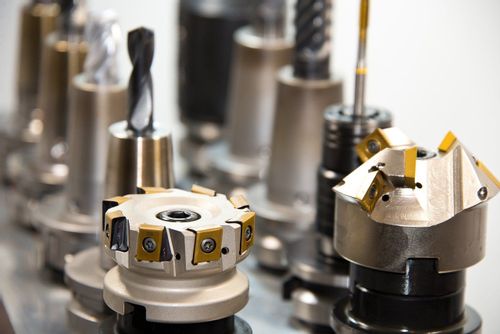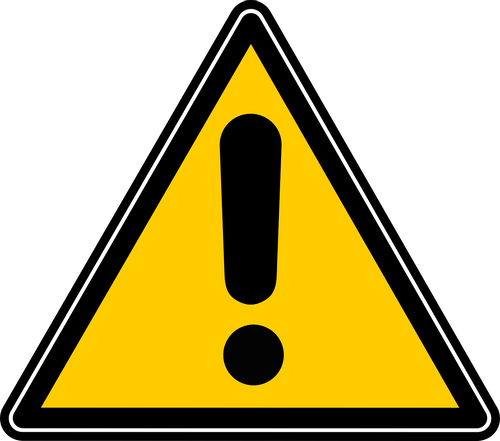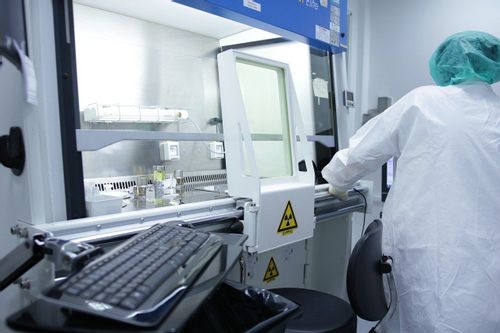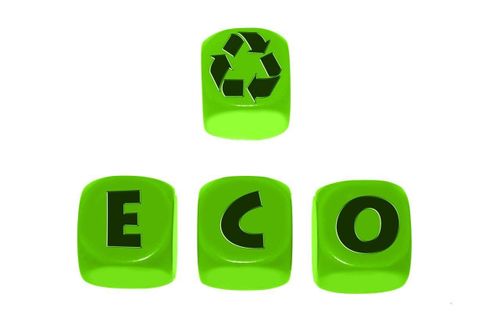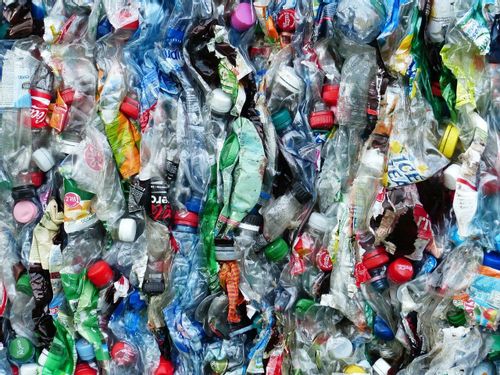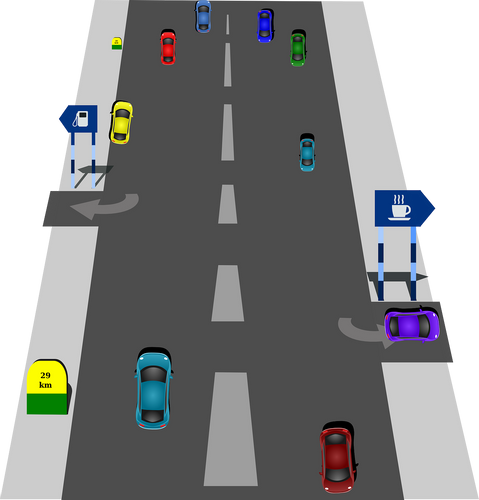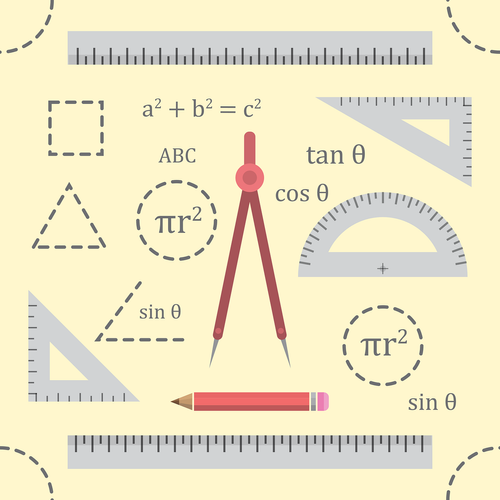Standards Packages
iTeh together with SIST has developed and compiled a comprehensive collection of standard packages to support your standard requirements. Our packages cover an array of content that includes quality management, risk management, road vehicles, machine safety, and much more. With over 200 packages to choose from, you are sure to find a collection to suit your standard needs.
Latest Standards
The present document is based upon benchmark for server Energy Efficiency (EE) tool for general and heterogeneous servers [i.6].
The present document specifies:
1) test conditions and product configuration for the assessment of EE of heterogeneous servers using reliable, accurate and reproducible measurement methods;
2) an EE metric to support procurement requirements;
3) requirements for equipment to perform the measurements and analysis;
4) requirements for the measurement process;
5) requirements for the management of the EE metric calculation;
6) operation or run rules to configure, execute, and monitor the testing;
7) documentation and reporting requirements.
The metrics and methods apply to heterogeneous servers with various configurations, including type and count of APAs, CPU, memory, storage and any other add-on hardware expected to be present when deployed.
NOTE: Products whose feature set and intended operation are not addressed by active mode testing parameters are excluded from this evaluation method.
- Standard24 pagesEnglish languagesale 15% off
- Standard24 pagesEnglish languagesale 15% off
- Standardization document24 pagesEnglish languagesale 10% offe-Library read for1 day
This document specifies the manual methods used for obtaining samples of liquid or semi-liquid hydrocarbons, tank residues and deposits from fixed tanks, railcars, road vehicles, ships and barges, drums and cans, or from liquids being pumped in pipelines.
It applies to the sampling of liquid products, including crude oils, intermediate products, synthetic hydrocarbons and bio fuels, which are stored at or near atmospheric pressure, or transferred by pipelines as liquids at elevated pressures and temperatures.
The sampling procedures specified are not intended for the sampling of special petroleum products which are the subject of other International Standards, such as electrical insulating oils (covered in IEC 60475), liquefied petroleum gases (covered in ISO 4257), liquefied natural gases (covered in ISO 8943) and gaseous natural gases (covered in ISO 10715).
This document refers to methods of sampling and sampling equipment in use at the time of writing. It does not exclude the use of new equipment, provided that such equipment enables samples to be obtained according to the requirements and procedures of this document.
- Standard79 pagesEnglish languagesale 10% offe-Library read for1 day
This document provides users with guidance that help manage risks related to energies & fluids during maintenance activities on items when in use. It is the responsibility of each employer, according to the terms commonly used in the company, to:
- Set out the correlation between the processes described in this document and standard practices,
- Define the roles and responsibilities of the people involved in the energies & fluids lockout process.
This document refers to concepts, definitions, rules, recommendations, and best practices taken from national and international documents (lockout/tagout - "administrative lockout" - Lockout/Tagout (LOTO) - Safe isolation) that cover activities to ensure the safety of workers with respect to energies & fluids.
This document deals with the prevention of energy & fluid (e.g. powders, gases, liquids, etc.) related risks; it is noted that some are covered by specific regulations or standards, such as the electrical risk. Environmental issues related to energies & fluids are not in the scope of this document. Danger associated with energies & fluids can be direct (e.g. contact, absorption, etc.) or indirect by reaction (e.g. mixing, heating, etc.). The scope includes all fluids because they can be intrinsically dangerous or become dangerous.
The recommendations given in this document have been drawn up with a view to ensure the safety and health of workers around hazardous energies & fluids, and situations when they are conducting actions related to maintenance, settings or changing formats, regardless of the type of activity.
The recommendations relate to activities carried out on items. They are applied before, during and after the operation to:
- The energies & fluids supplied, contained, transported, or released by items, products,
- Risks related to the presence of hazardous energies & fluids for the worker and the surrounding personal.
This document is a methodological guideline within the maintenance standards.
NOTE Particular cases such as risks of lack of presence of vital elements for the worker (e.g. breathable air) are in the scope but will not be detailed.
- Standard98 pagesEnglish languagesale 10% offe-Library read for1 day
This document specifies the safety requirements for the design of must and grape harvest pumps and the means for verifying these requirements and gives information for the safe use of the machines covered.
This document applies to must and grape harvest pumps, as defined in 3.1, intended for the transfer of fresh, de-stemmed grapes and pomace.
This document deals with all significant hazards, hazardous situations or hazardous events relevant to grape harvest pumps, when it is used as intended and under conditions of misuse which are reasonably foreseeable by the manufacturer, specified in Annex B.
This document does not deal with hazardous phenomena associated with the integration of grape harvest pumps with other machinery.
This document does not give additional requirements for operations subject to special rules (e.g. explosive atmosphere, power supply from electrical networks where the voltage, frequency and tolerance differ from those of the public network).
This document is not applicable to:
- adaptations intended for other fruit harvests;
- pumps for building materials (covered by EN 12001 [1]);
- pumps on grape harvesters;
- reception conquests;
- machines upstream or downstream of the pump.
This document is not applicable to grape harvest pumps manufactured before the date of its publication.
- Standard51 pagesEnglish languagesale 10% offe-Library read for1 day
This document specifies a real-time PCR procedure for the quantitation of the amount of roe deer DNA relative to total mammalian DNA in meat and meat products.
Results of this roe deer assay are expressed in terms of roe deer (Capreolus capreolus) haploid genome copy numbers relative to total mammalian haploid genome copy numbers. The content of roe deer can also be expressed as mass fraction in % using gravimetrically prepared calibration material from meat mixtures or model samples.
The method has been previously validated in a collaborative study and applied to DNA extracted from samples that consist of raw roe deer meat in a raw pig meat background as well as raw and boiled sausages.
The limit of detection of the roe deer PCR has been determined experimentally to be at least 5 target gene copies or at least 0,1 % roe deer.
The compliance assessment process is not part of this document.
- Standard16 pagesEnglish languagesale 10% offe-Library read for1 day
This document specifies the requirements and their test methods for elastomeric impression and bite registration materials.
- Standard41 pagesEnglish languagesale 10% offe-Library read for1 day
This document specifies polymers commonly used in manufacturing dental instruments.
It is applicable to polymers used to manufacture either an entire instrument or part of an instrument.
It is applicable to single-use and reusable dental instruments, whether they are connected to a power-driven system or not.
This document does not apply to oral appliances and devices (e.g. splints, mouthpieces, crowns, bridges, implants), to instruments used long-term in the mouth of the patient or to devices and instruments not made of polymers.
This document contains a selection of polymers suitable for use in the manufacture of dental instruments.
- Standard14 pagesEnglish languagesale 10% offe-Library read for1 day
This document specifies the requirements for the function, design, performance and testing of brake indicators. It applies to brake indicators visible from the outside of the rail vehicle.
- Standard26 pagesEnglish languagesale 10% offe-Library read for1 day
This document specifies general requirements and their test methods for dusters for applying formulated products in the form of dust with regard to minimizing the potential risk of environmental contamination during use.
Hand operated portable dusters (knapsack) are not included in this document.
This document deals with all the significant environmental hazards related to the duster, namely:
- hazards due to involuntary or unnecessary application of PPP;
- hazards due to point pollution;
- hazards due to losses to other areas than the target;
- hazards due to maintenance, servicing and cleaning operations;
- hazards due to inspections, such as unavailability of means to connect measuring instruments.
This document does not deal with safety requirements for protection of the operator only.
NOTE General safety requirements to protect the operator are covered by EN ISO 4254-1.
This document is not applicable to dusters manufactured before the date of its publication.
- Standard14 pagesEnglish languagesale 10% offe-Library read for1 day
This document applies to passenger body side entrance systems of all newly designed railway vehicles such as tram, metro, suburban, main-line and high-speed trains that carry passengers. The requirements of this document also apply to existing vehicles undergoing refurbishment of the door equipment, as far as it is reasonably practicable.
This document also specifies the requirements for testing of entrance systems.
This document makes reference to manual and power operated entrance systems. For manual doors, clauses referring to power operation are not applicable.
This document does not apply to the following:
- Entrance systems for equipment access, inspection or maintenance purposes and for crew only use;
- Doors on freight wagons; and
- Doors or hatches specifically provided for escape under emergency conditions.
Where passenger bodyside entrance doors are to be used for staff access, EN 16116-1:2022, EN 16186-4:2019 and EN 16186-8:2022+A1:2024 provide the details for the staff access requirements.
- Standard91 pagesEnglish languagesale 10% offe-Library read for1 day
This document specifies viewing conditions for images on both reflective and transmissive media, such as prints (both photographic and photomechanical) and transparencies. This document applies to — critical evaluation of and comparison between transparencies, backlighted signs, reflection photographic or photomechanical prints and/or a reference object or image, — appraisal of the tone reproduction and colourfulness of prints and transparencies at illumination levels similar to those for practical use, including routine inspection, and — critical appraisal of transparencies which are viewed by projection, for comparison with prints, objects, or other reproductions. This document is not applicable to soft-proofing displays, for paper manufacture, and other applications outside of graphic technology and photography.
- Standard29 pagesEnglish languagesale 15% off
- Draft29 pagesEnglish languagesale 15% off
- Draft29 pagesEnglish languagesale 15% off
IEC 60730-2-8:2025 applies to electrically operated water valves • for use in, on, or in association with equipment for household appliance and similar use; NOTE 1 Throughout this document, the word "equipment" means "appliance and equipment" and "control" means "electrically operated water valve". EXAMPLE 1 Electrically operated water valves for appliances within the scope of IEC 60335. • for building automation within the scope of ISO 16484 series and IEC 63044 series (HBES/BACS); EXAMPLE 2 Independently mounted water valves, controls in smart grid systems and controls for building automation systems within the scope of ISO 16484-2. • for equipment that is used by the public, such as equipment intended to be used in shops, offices, hospitals, farms and commercial and industrial applications; EXAMPLE 3 Electrically operated water valves for commercial catering, heating and air-conditioning equipment. • that are smart enabled electrically operated water valves; EXAMPLE 4 Smart grid control, remote interfaces and controls of energy-consuming equipment including computer or smart phone. • that are AC or DC powered electrically operated water valves with a rated voltage not exceeding 690 V AC or 600 V DC; • used in, on, or in association with equipment that uses electricity, gas, oil, solid fuel, solar thermal energy, etc., or a combination thereof; • utilized as part of a control system or controls which are mechanically integral with multifunctional controls having non-electrical outputs; • using NTC or PTC thermistors and to discrete thermistors, requirements for which are contained in Annex J of Part 1; • responsive to or controlling such characteristics as temperature, pressure, passage of time, humidity, light, electrostatic effects, flow, or liquid level, current, voltage, acceleration, or combinations thereof; • in which actuators and valve bodies are designed to be fitted to each other. • as well as manual controls when such are electrically or mechanically integral with automatic controls. NOTE 2 Requirements for manually actuated mechanical switches not forming part of an automatic control are contained in IEC 61058-1-1. This document applies to - the inherent safety of electrically operated water valves, and - functional safety of electrically operated water valves and safety related systems, - controls where the performance (for example the effect of EMC phenomena) of the product can impair the overall safety and performance of the controlled system, - the operating values, operating times, and operating sequences where such are associated with equipment safety. This document specifies the requirements for construction, operation and testing of electrically operated water valves used in, on, or in association with an equipment. This document contains requirements for electrical features of water valves and requirements for mechanical features of valves that affect their intended operation. This document does not • apply to electrically operated water valves intended exclusively for industrial process applications unless explicitly mentioned in the relevant Part 2 or the equipment standard. However, this document can be applied to evaluate automatic electrical controls intended specifically for industrial applications in cases where no relevant safety standard exists. • apply to - electrically operated water valves of nomi
- Draft48 pagesEnglish languagesale 10% offe-Library read for1 day
This document applies to the determination of beta emitters activity concentration using liquid scintillation counting. The method requires the preparation of a scintillation source, which is obtained by mixing the test sample and a scintillation cocktail. The test sample can be liquid (aqueous or organic), or solid (particles or filter or planchet). NOTE Planchet are samples, described in REF Section_sec_8.5 \r \h 8.5, out of solid material e.g. small metal, plastic or glass pans or support material made of these materials This document describes the conditions for measuring the activity concentration of beta emitter radionuclides by liquid scintillation counting[ REF Reference_ref_8 \r \h 2 08D0C9EA79F9BACE118C8200AA004BA90B0200000008000000100000005200650066006500720065006E00630065005F007200650066005F0038000000 ]. The choice of the test method using liquid scintillation counting involves the consideration of the potential presence of other beta-, alpha- and gamma emitter radionuclides in the test sample. In this case, a specific sample treatment by separation or extraction is implemented to isolate the radionuclide of interest in order to avoid any interference with other beta-, alpha- and gamma-emitting radionuclides during the counting phase. This document is applicable to all types of liquid samples having an activity concentration ranging from about 1 Bq·l−1 to 106 Bq·l−1. For a liquid test sample, it is possible to dilute liquid test samples in order to obtain a solution having an activity compatible with the measuring instrument. For solid samples, the activity of the prepared scintillation source shall be compatible with the measuring instrument. The measurement range is related to the test method used: nature of test portion, preparation of the scintillator - test portion mixture, measuring assembly as well as to the presence of the co-existing activities due to interfering radionuclides. Test portion preparations (such as distillation for 3H measurement, or benzene synthesis for 14C measurement, etc.) are outside the scope of this document and are described in specific test methods using liquid scintillation[3][[4][5][6][7][8][9][10].
- Standard22 pagesEnglish languagesale 15% off
- Standard22 pagesFrench languagesale 15% off
- Draft22 pagesEnglish languagesale 15% off
- Draft22 pagesEnglish languagesale 15% off
- Draft24 pagesFrench languagesale 15% off
This document specifies the Spatial Reference Model (SRM) defining relevant aspects of spatial positioning and related information processing. The SRM allows precise and unambiguous specification of geometric properties such as position, direction, orientation, and distance. The SRM addresses the needs of a broad community of users, who have a range of accuracy and performance requirements in computationally intensive applications. Aspects of this document apply to, but are not limited to: a) mapping, charting, geodesy, and imagery; b) topography; c) location-based services; d) oceanography; e) meteorology and climatology; f) interplanetary and planetary sciences; g) embedded systems; and h) modelling and simulation. The SRM specifies an application program interface (API) that supports the representations, conversion, and transformation of position and orientation information in a variety of forms. To ensure that spatial operations are performed consistently, the application program interface specifies conversion operations between alternative representations of geometric properties. This document is not intended to replace the standards and specifications developed by ISO/TC 211, ISO/TC 184, the International Astronomical Union (IAU), and the International Association of Geodesy (IAG). It is applicable to applications whose spatial information requirements overlap two or more of the application areas that are the scope of the work of ISO/TC 211, ISO/TC 184, the IAU, and the IAG.
- Standard703 pagesEnglish languagesale 15% off
- Standard703 pagesEnglish languagesale 15% off
- Standard703 pagesEnglish languagesale 15% off
- Standard703 pagesEnglish languagesale 15% off
- Standard703 pagesEnglish languagesale 15% off
- Standard703 pagesEnglish languagesale 15% off
- Standard703 pagesEnglish languagesale 15% off
- Standard703 pagesEnglish languagesale 15% off
- Standard703 pagesEnglish languagesale 15% off
- Standard703 pagesEnglish languagesale 15% off
- Standard703 pagesEnglish languagesale 15% off
- Standard703 pagesEnglish languagesale 15% off
- Standard703 pagesEnglish languagesale 15% off
- Standard703 pagesEnglish languagesale 15% off
- Standard703 pagesEnglish languagesale 15% off
- Standard703 pagesEnglish languagesale 15% off
- Standard703 pagesEnglish languagesale 15% off
- Standard703 pagesEnglish languagesale 15% off
- Standard703 pagesEnglish languagesale 15% off
- Standard703 pagesEnglish languagesale 15% off
- Standard703 pagesEnglish languagesale 15% off
- Standard703 pagesEnglish languagesale 15% off
- Standard703 pagesEnglish languagesale 15% off
- Standard703 pagesEnglish languagesale 15% off
- Standard703 pagesEnglish languagesale 15% off
- Standard703 pagesEnglish languagesale 15% off
- Standard703 pagesEnglish languagesale 15% off
- Standard703 pagesEnglish languagesale 15% off
- Standard703 pagesEnglish languagesale 15% off
- Standard703 pagesEnglish languagesale 15% off
- Draft6 pagesEnglish languagesale 10% offe-Library read for1 day
This document specifies advanced video coding for coding of audio-visual objects.
- Standard997 pagesEnglish languagesale 15% off
- Draft997 pagesEnglish languagesale 15% off
- Draft997 pagesEnglish languagesale 15% off
This document specifies the minimum requirements to quantify boil-off gas (BOG) consumed on liquefied natural gas (LNG) carriers for their own functions, in particular for power generation and during cargo transfer operations. This document provides requirements for the metering of BOG and the subsequent calorific value calculations, which can be taken into account when the energy transferred during cargo transfer is determined. This document also gives performance requirements and calibration of the elements included in the BOG measurement system. This document, with some modifications, can also be applied to the measurement of BOG consumed by LNG carriers at sea.
- Standard13 pagesEnglish languagesale 15% off
- Draft13 pagesEnglish languagesale 15% off
- Draft13 pagesEnglish languagesale 15% off
This document defines terms for classifying and assessing green tea for commerce.
- Standard57 pagesEnglish languagesale 15% off
- Draft56 pagesEnglish languagesale 15% off
- Draft56 pagesEnglish languagesale 15% off
This document specifies the general principles for the application of the time-of-flight diffraction (TOFD) technique for both detection and sizing of discontinuities in low-alloyed carbon steel components. This document also applies to other types of materials, provided the application of the TOFD technique is performed with necessary consideration of geometry, acoustical properties of the materials, and the test sensitivity. Although this document is applicable, in general terms, for discontinuities in materials and applications covered by ISO 16810, it contains references to the application on welds. This approach has been chosen for reasons of clarity as to the probe positions and directions of scanning. Unless otherwise specified in the referencing documents, the minimum requirements specified in this document apply. Unless explicitly stated otherwise, this document is applicable to the following categories of test objects as specified in ISO 16811: — category 1, without restrictions; — categories 2 and 3, specified restrictions apply (see REF Section_sec_10 \r \h Clause 10 08D0C9EA79F9BACE118C8200AA004BA90B02000000080000000F000000530065006300740069006F006E005F007300650063005F00310030000000 ); — categories 4 and 5 require special procedures, which are also addressed (see REF Section_sec_10 \r \h Clause 10 08D0C9EA79F9BACE118C8200AA004BA90B02000000080000000F000000530065006300740069006F006E005F007300650063005F00310030000000 ). NOTE Techniques for the use of TOFD for weld testing are described in ISO 10863 and the related acceptance criteria are given in ISO 15626.
- Standard21 pagesEnglish languagesale 15% off
- Standard22 pagesFrench languagesale 15% off
- Draft21 pagesEnglish languagesale 15% off
- Draft21 pagesEnglish languagesale 15% off
- Draft24 pagesFrench languagesale 15% off
This document specifies the minimum image quality values (using IQIs) to ensure a uniform radiographic image quality. This document specifies the minimum IQI values for the two testing classes, A and B, of radiographic techniques as specified in ISO 5579. This document is applicable to the two types of image quality indicators as detailed in ISO 19232-1 for wire-type IQIs and ISO 19232-2 for step/hole-type IQIs, and for the two testing, classes A and B, as specified in ISO 5579.
- Draft13 pagesEnglish languagesale 10% offe-Library read for1 day
Benefits

Full Standards Solution
Our catalog includes not only latest standards but also full meta information about related standardization project lifecycle.

Cost Effective
Our PRICE MATCH GUARANTEE policy with multi-level volume discounts gives our clients the best option in the market. In addition, you can get access to the standards for 3, 10, or 30 days.

Stay Notified
Get alerted to the latest revisions and new standards in the Weekly Newsletter. Standards are constantly changing. Don’t miss a revision that can impact your business.
About Us
iTeh Inc is a software development and IT consulting team of professionals who provide consulting, development and implementation of solutions for all types of businesses.
In cooperation, with the Slovenian Institute of Standardization (SIST), we create a unique solution that covers all aspects of the lifecycle of Standardization organizations. iTeh Standards is a part of the solution that helps SIST to provide and sell their products to Customers.
iTeh Standards Store is an evolving project, our goal is to build long-term relationships with our customers. We believe in delivering quality services to solve our customers' challenges and define success by exceeding our customers' expectations. We are always ready to listen and our experience allows us to provide our customers with helpful effective suggestions. You can contact us by email.
We are committed to providing the best possible experience for our customers.
Compliance with international standards is increasingly becoming one of the key competitive advantages in the global market. Our company creates all conditions for the most comfortable implementation of new documents and norms in the processes carried out by your organization. Some of the key advantages of working with us are:
- Cost-effective - multi-level discounts and permanent updates of the functions give our clients the best option on the market.
- e-Library - access to standards for a period of time of your choice. It is a cost-effective solution for keeping updated with the newest standards.
- Company-wide documents - create a company account and connect all employees with access to purchased standards, e-Library documents, and packages.
- All in one spot - all purchased standards are kept in one place with controlled access by the account administrator.
- Client-centric - providing quality consulting is the prerogative and incentive to create new products that accompany your success and scale.
- 24 / 7 client support
We are dedicated to building mutually beneficial and long-term relationships with our clients. That is why our team focuses on creating services to help our customers develop and achieve new productive results.










